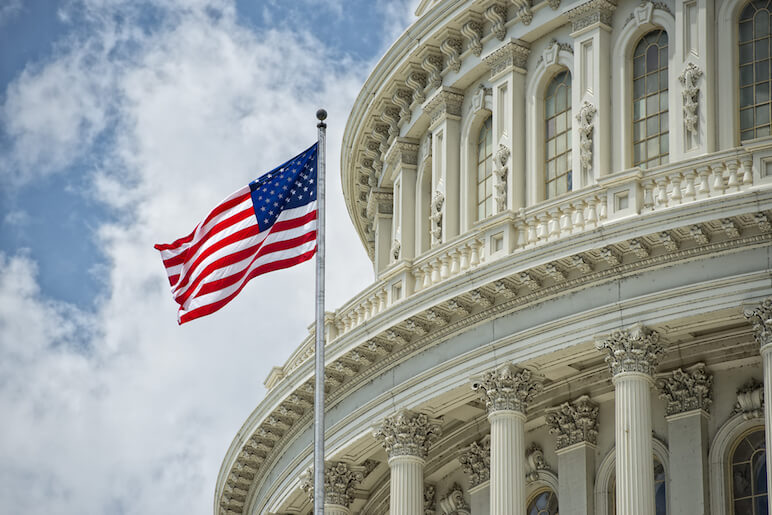
Monaem Sarker:
Introduction: Before the recent market volatility, the U.S. economy was on a solid footing. A buoyant job market had fueled rising household income and strong consumer spending that cushioned the economy through choppy waters created by the trade war with China, a manufacturing contraction and weakening momentum abroad.
Then came the coronavirus!
A public health emergency transformed into an economic emergency.
At this point, both the magnitude and duration of the economic effects of the virus are highly uncertain. They will depend on how the disease progresses, the efficacy of the actions countries take, public health officials’ contingency planning and implementation of those plans, and actions policymakers take to mitigate the effects on sentiment and economic activity.
However, preliminary data suggest that the U.S. economy is already shrinking, as businesses close and unemployment soars.
The strong labor market that kept the U.S. economy humming for a decade has grounded to a halt as a result of the coronavirus pandemic. A record 3.28 million workers applied for unemployment benefits in the last week in March, a fifteen fold increase from the previous week.
Add to that the composite purchasing managers index (PMI) for the U.S. released in late March. It dropped to a seasonally adjusted 40.5 in March from 49.6 in February. The decline was the steepest recorded since 2009. The services sector was particularly hard-hit, with services PMI contracting at the fastest rate in the last decade as restaurants, bars and hotels all bore the brunt of the social-distancing measures.
All these suggest that the U.S. economy has fallen into a recession in the first quarter of 2020. At this point, we expect the drop in GDP growth in Q1 to exceed 2%. But it will nosedive in Q2-2020. We also project a contraction in Q3.
The extent of the coming downturn remains unclear, given uncertainties stemming from an unknown trajectory of the pandemic, extreme volatility in the financial markets, restrictions on daily economic activity of unknown duration and a government response that is being adjusted every day and is likely to continue to change in the weeks and months ahead.
Why so severe contraction?
There are three channels through which U.S. real GDP growth would downshift, at least in the next few months. First, slower growth in countries that have been affected by the outbreak will exert headwinds on U.S. export growth. Second, the U.S. supply chain would be adversely affected by output stoppages in other countries. Third, financial conditions have tightened significantly as the stock market has swooned and the corporate bond spreads have pushed wider. If the selloff in capital markets is sustained, banks could eventually tighten lending standards for businesses and households.
The severity of the contraction that we expect for overall GDP in the first half of 2020 reflects the drop in personal consumption expenditures, which accounts for roughly two-thirds of total spending in the economy. There are some categories of consumer spending, such as air travel, restaurants, hotels, etc., that have more or less experienced “sudden stops.” Not only will sharp declines in spending in these categories directly depress personal consumption expenditures, but there will be indirect negative effects on other categories of spending as newly unemployed workers cut down discretionary consumption.
On the other hand, some categories (e.g., spending on groceries and health care products) will be boosted. On net, however, overall personal consumption expenditures will drop significantly.
Global Economic Outlook:
Globally, we are heading towards uncharted territory now. Previous slowdowns were due to sharp falls in demand, exacerbated by poor consumer and investor confidence. But this time, economic activity was also being directly disrupted by strict measures imposed by many countries to curb the spread of the coronavirus.
Let’s start with the Eurozone. Many countries in the euro area are essentially locked down at present, so many parts of those economies have come to an abrupt halt. But under the assumption that the social distancing measures that have been put in place succeed in bringing the outbreak in Europe to an end, economic activity in the Eurozone should begin to stabilize later this year. We now forecast that real GDP in the Eurozone will slump at an annualized rate of roughly 15% in the second quarter. We look for real GDP in the euro area to fall at least 4% this year.
In the last four decades, China has not experienced a year in which real GDP has contracted. We believe that string will come to an end in 2020 as we forecast that Chinese GDP will fall about 1% this year. Much of this contraction reflects the nosedive that the economy experienced earlier this year when some of the most economically important regions of the country were under complete lock down.
Now that life is returning to normal in China, the economy should bounce back. The factories are gradually starting production, stores are opening, but demand has crashed as buyers world-wide take a pause and wait for the pandemic to end. It will take a few quarters to dig out of the deep hole the economy fell into during Q1. Moreover, deep recessions in most other major economies will exert some headwinds on Chinese GDP growth this year via weaker export growth.
We also see a wide range of problems building up in the developing countries including Bangladesh – the spread of the virus, the shut-down of economies, capital outflows and a price shock for commodity exporters. – Many of these developing countries including Bangladesh will experience a contraction as necessary containment measures take their toll, and are shocked by reduced global demand for their exports – tourism, commodities, and manufactured goods – that provide critical streams of foreign exchange.
We do project recovery in 2021. In fact, there may be a sizeable rebound, but only if countries succeed in containing the virus everywhere and prevent liquidity problems from becoming a solvency issue. A key concern about a long-lasting impact of the sudden stop of the world economy is the risk of a wave of bankruptcies and layoffs that can undermine the recovery. To avoid this from happening many countries have taken far-reaching measures to address the health crisis and to cushion its impact on the economy, both on the monetary and on the fiscal side.
Outlook: The events of the past few weeks have been unprecedented, and we have no useful roadmap to follow that would give us clear insights into how the economy may evolve in coming quarters. In general, however, we think the fallout from the coronavirus outbreak will have a significant negative impact on U.S. economic prospects. A recession is now all but certain and would in some ways rival—and possibly even surpass—the severity of the 2007-09 slump.
A record-setting rate of economic contraction in the second quarter is essentially a foregone conclusion, and we look for the growth-depressing after-effects of the shock to linger through the third quarter. The ranks of the unemployed likely will swell dramatically in coming months.
We project that nonfarm payrolls will decline by roughly eight million jobs over the next two quarters and that the unemployment rate will shoot up from its current 50-year low of 3.5% to nearly 9% in the third quarter of this year. The slump in economic activity and the sharp rise in the unemployment rate should push consumer price inflation down to less than 1% by this summer.
But we look for the U.S. and global economy to start bouncing back later in 2021. The world economy should return to a positive trajectory once the coronavirus pandemic is brought under control and assuming that the outbreak doesn’t reappear.
8th April, 2020
Writer : Politician, Columnist & presently Director General, Bangladesh Foundation for Development Research










